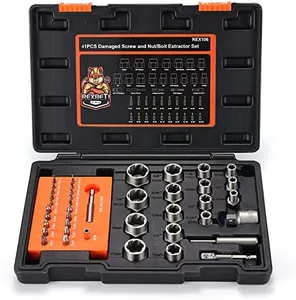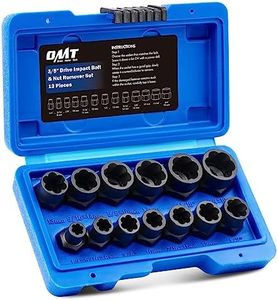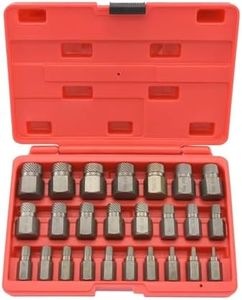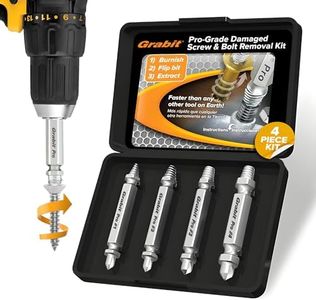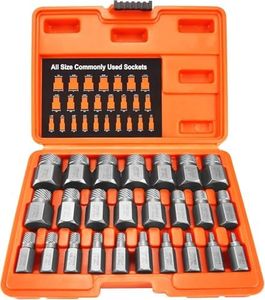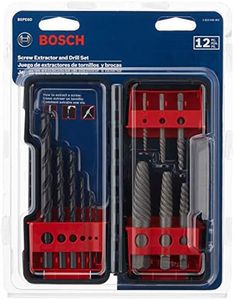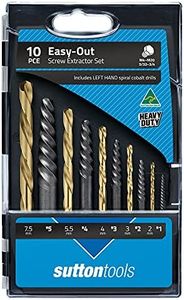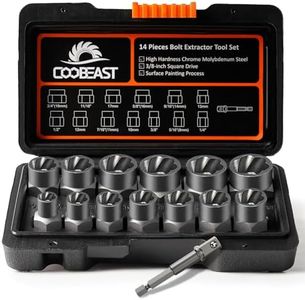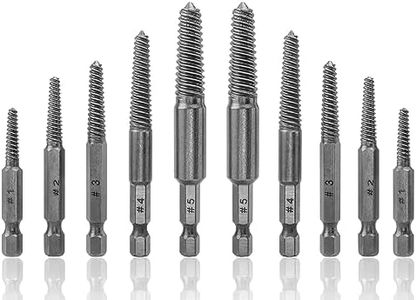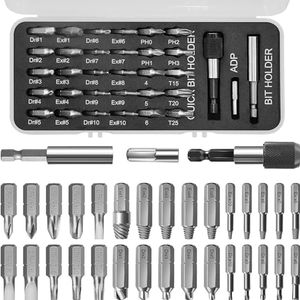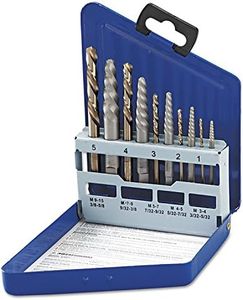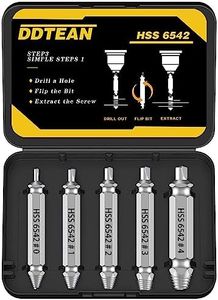We Use CookiesWe use cookies to enhance the security, performance,
functionality and for analytical and promotional activities. By continuing to browse this site you
are agreeing to our privacy policy
10 Best Stripped Screw Remover
From leading brands and best sellers available on the web.Buying Guide for the Best Stripped Screw Remover
Choosing the right stripped-screw remover is all about making your life easier when you’re dealing with stubborn, damaged, or stuck screws. These tools are designed to help you safely extract screws that have lost their grip or can’t be handled with a regular screwdriver. The key to finding the best fit is to consider the types and sizes of screws you typically deal with, the kind of work you do—whether it's occasional DIY or more professional tasks—and the variety of features the removers offer. Focus on how easy the tool is to use and whether it fits your usual projects.Compatibility and Size RangeThis spec refers to the range of screw sizes and types that the remover can work with, usually listed by diameter or screw head style (like Phillips, flathead, Torx, etc.). It’s important because a remover that's too big or too small won't grip or extract the screw correctly. Some removers come as kits covering a wide range, while others target specific sizes. For small gadgets or electronics, look for removers for fine screws; for furniture, household or automotive work, a wider size range is useful. Think about the typical size and type of screws you face to choose the right set.
Material and DurabilityMaterial generally refers to what the remover is made from, commonly high-speed steel or another hardened alloy. More durable materials mean the remover lasts longer, especially when extracting tough or rusted screws. Lower-quality materials may wear out or snap under pressure. If you regularly work with tough screws or you need a set for repeated use, pick removers made with hardened steel or enhanced alloys. For occasional home use, standard steel is often sufficient.
Design (Double-Ended or Single-Ended)Some removers are double-ended, with one end for drilling a hole into the damaged screw and the other for extracting it, while others are single-ended for only one function. Double-ended designs save time since you don't need to swap tools, making them handy for frequent use or if you want a faster process. Single-ended types are simple and often sturdier, which can be useful for tougher jobs. Decide based on how often you need to change between drilling and extracting in your tasks.
Ease of UseEase of use covers how simple the remover is to operate, including whether it works with standard drills or manual drivers and how much skill or force is needed. Simpler tools are great for beginners, while some advanced versions may require more technique but are more effective with challenging screws. If you don’t use power tools often, look for removers that work well with manual drivers. If you regularly use drills, make sure the remover is compatible for faster extraction.
Grip TechnologyThis refers to the way the remover bites into the stripped screw—such as spiral flutes or reverse threading. Better grip means less slipping and a higher chance of a successful removal. Basic models work for lightly stripped screws, while those with more advanced gripping technology are better for completely rounded or rusted screws. Assess how badly stripped your screws generally are to pick the right level of grip technology.

